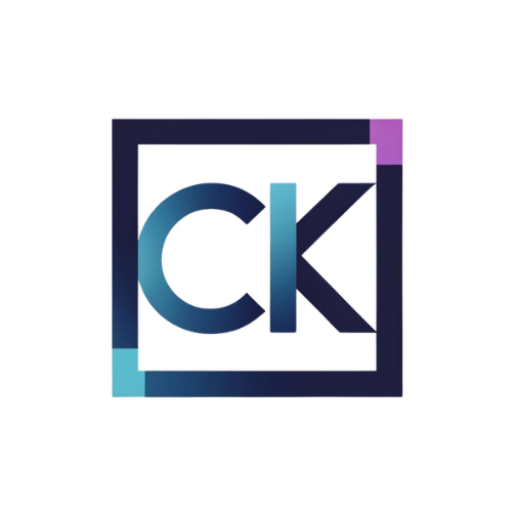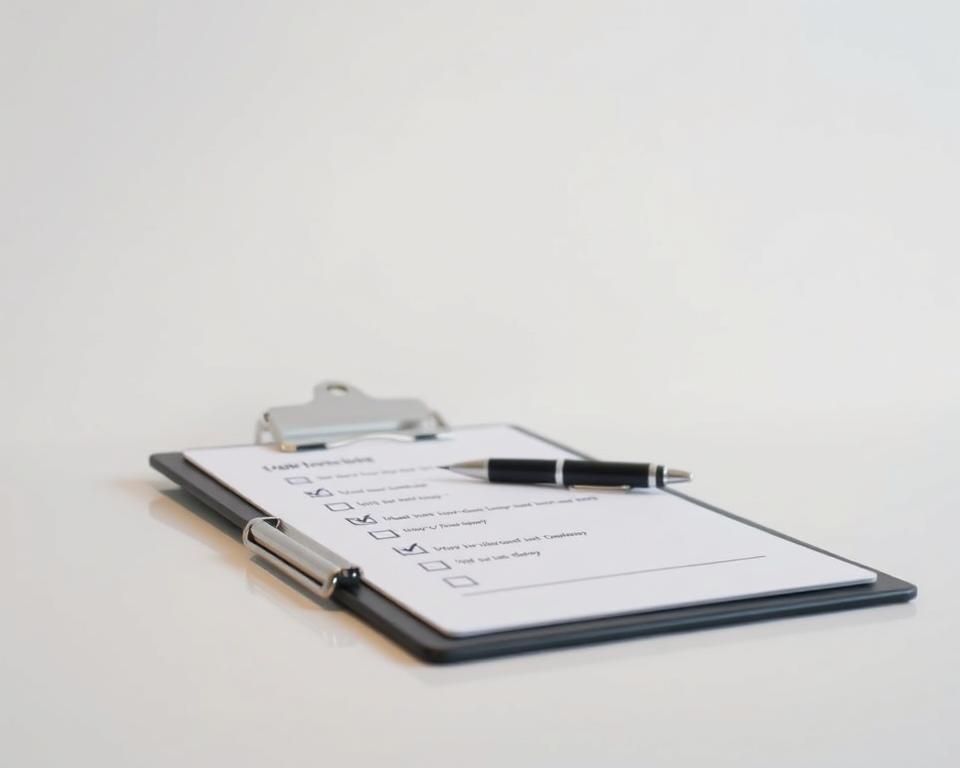Anúncios
Interview tips examples set the tone for how you prepare in 2025, when many processes mix live conversations and recorded prompts.
How will you show clear thinking when answers are limited to a few minutes?
You learn to read a job posting, map the role to outcomes, and pick numbers that prove impact. Metrics and short, proof-based stories help hiring teams see your ramp-up time and value without long monologues.
Use simple action plans before, during, and after each meeting to manage nerves, keep notes, and follow up professionally. Adapt this guide to your situation and consider professional feedback when you want faster progress, without expecting guarantees.
Introduction: Interview tips examples that work in 2025
In 2025, hiring moves faster and asks you to show clear, measurable impact in compact answers. Many roles now mix recorded prompts with live panels, so concise storytelling matters more than long resumes. This guide keeps your prep focused and repeatable.
Anúncios
Why 2025 interviews feel different
Hybrid processes and skills-first screening mean you face timed prompts and short live slots. Employers want evidence, not titles. Aim to answer an average question in about five minutes and wrap with a clear result.
What employers evaluate beyond your resume
Hiring teams look for structured thinking, collaboration, and learning agility. A good employer values metrics and behavior that show fit for the position and the team.
How this guide is structured for quick practice
- Scan the job description, pick three outcomes, match relevant skills and examples.
- Use short, measurable stories that prove your experience and judgment.
- Practice aloud in 10–15 minute training blocks to refine timing and clarity.
Quick exercise: pick one role, find the top requirement in the description, and craft a 60–90 second proof you can deliver under pressure.
Decode the job description to spotlight relevant skills
Start by parsing the job description into clear buckets so you can match what the role actually needs. Read the posting once for context, then again to highlight nouns and verbs that show daily work and results.
Pull keywords that map to responsibilities, tools, and outcomes
Separate the posting into three columns: responsibilities, tools, and business outcomes. Look for repeated words the employer uses—those are priority skills for the role.
- Mark top skills you see at least twice.
- List tools and processes mentioned (Excel, Figma, SQL, Agile).
- Note business outcomes like quality, speed, cost, or customer impact.
Build a skills-to-experience matrix you can speak to
Create a small matrix (3–5 rows, 3 columns) that maps each skill to one concise story and one metric. Each row becomes a single talking point: context, action, measurable result.
- Skill — Tool — Outcome: e.g., “Data analysis — SQL — cut reporting time by 40%.”
- Qualification check: mark required vs. preferred and plan one bridging story for any gaps.
- Team handoffs: flag two cross-functional points to show collaboration with product, engineering, or sales.
Rehearse the matrix aloud. Aim for two minutes per quick answer and five minutes for deeper question responses. Bring the sheet into the meeting so you answer precisely and connect your experience back to what the job and team need now.
Craft a strong “Tell me about yourself” that fits the role
Start your intro with a tight narrative that links what you’ve done to what the team needs now.
A simple formula: past (relevant background), proof (1–2 metrics), present fit (why this position and team).
A simple structure: past, proof, and present fit
Past: name one part of your background that matches the role.
Proof: share one short experience with a metric or result.
Present fit: close with why this position matters and how you’ll help in the next 90 days.
Short sample for creative, analytical, and service roles
- Creative: led a campaign that lifted engagement 30% with a new style guide.
- Analytical: built a dashboard that cut reporting time 40% and raised forecast accuracy.
- Service: improved CSAT to 92% while cutting average handle time 15%.
Common pitfalls: resume recaps and vague claims
Avoid listing past titles or broad claims without numbers. Keep jargon light and focus on what you did, why it mattered, and what you learned.
Practicea 60–90 second version for a recruiter screen and a slightly deeper one for a hiring manager so your delivery matches theroleand thejobfocus.
Behavioral interview questions: use STAR with proof
Tell compact stories that highlight decisions, trade-offs, and measurable results. Use STAR (Situation, Task, Action, Result) so your answer stays focused and easy to follow.
Problem-solving: steps, trade-offs, and impact
Set the Situation and Task in 20–30 seconds. Spend most time on Action—explain options you weighed, the trade-offs, and why you chose that path.
Close with measurable outcomes: reduced defects by X%, sped delivery by Y days, or saved $Z. This proves success.
Collaboration and communication across teams
Name the teams and roles you worked with and your communication cadence. Show how you resolved conflicts and kept stakeholders aligned.
Inclusivity: hearing different viewpoints fairly
Describe how you invited input, adjusted plans based on feedback, and kept decisions transparent so diverse views shaped the result.
Drive and impact: defining and measuring success
Define success up front, record progress, and explain how you handled setbacks. Prepare a 90-second micro-STAR and a five-minute deeper version for each behavioral question so you can match interviewer depth.
Organization and prioritization: answer with systems and tools
Describe a system that turns incoming requests into prioritized work and clear owners. Start with daily calendar blocks for deep focus and twice-weekly slots for content planning. Use a shared Trello board (personal lists + a shared marketing board) with color labels and due dates so everyone sees priorities for the role.
Schedule social posts in Hootsuite and reserve two blocks of time each week to review performance. Keep a Google Drive per campaign with goals, assets, post records, and retrospectives for reuse and onboarding.
Concrete tools and a risk response
When news breaks, pause scheduled posts in Hootsuite, tag stakeholders in Trello, and start a Slack thread to align on next actions. If needed, propose a short meeting. This response keeps the team calm and reduces errors.
Team benefit and measurable outcome
This system cuts last-minute scrambles and improves on-time delivery. In one job, the process reduced missed deadlines by 45% and sped campaign launches by three days. Keep reviews weekly and adapt the steps to different platforms while preserving clarity and fast communication for any interview question about your approach.
Time your responses: aim for about five minutes per question
Pacing your answers makes your message clear and helps the hiring team follow your thinking. Timing is everything; manage your time so deep prompts get up to five minutes and quick checks land in about two.
“Pause briefly, then speak with purpose.”
Before you speak, take a short breath to organize thoughts. If a question feels broad, ask a clarifying question so your response ties directly to the job and role priorities.
Structure longer answers with clear signposts: context, actions, results. End each reply with a crisp result and one-line learning so the interviewer leaves with the takeaway.
- Plan depth: two-minute quick answers, five-minute deep responses.
- Watch cues (typing or follow-ups) and trim detail when needed.
- Keep two expandable stories ready to scale up or down.
Practice with a timer and record yourself to tighten delivery. Stay conversational, reference the role early, and keep steady energy so the meeting feels like a true dialogue about the job.
Interview tips examples for common interview questions
Frame your responses to show how you’ll move the team forward in the first months.
Why this position and team
Start with one clear outcome you can impact in 90 days. Name the problem, your role, and the metric you will change.
Sample angle: “This position lets me reduce onboarding time by improving documentation and training. In my last job I cut ramp time from 20 to 12 days, which lifted throughput 18%.”
Working with people who think differently
Describe how you listen, reflect, and find shared goals. Show a short method and a result.
Sample angle: “I set a weekly sync, summarize opposing views, and surface trade-offs. That process moved a stalled feature to completion and raised cross-team satisfaction 25%.”
Handling setbacks and learning fast
Name the challenge, what you tried, what failed, and the change you made. End with the learning and a measured outcome.
Sample angle: “When a launch missed quality targets, I introduced a quick rollback plan and root-cause checklist. Defects fell from 7% to 2% within two sprints.”p>
- Keep answers under five minutes and close with a result or learning.
- Align each story to the role, the job’s environment, and adjacent functions.
- Bring one structured example and one ambiguous-case example to match interviewer focus.
Quantify your value: metrics that resonate with hiring teams
Lead with a clear before/after number so your success is instantly understandable. State the baseline, the timeframe, and the final result up front. That makes your impact easy to parse in a short meeting.

Quality, speed, cost, risk, and customer metrics
Organize metrics into five buckets: quality, speed, cost, risk, and customer. Pick the bucket that matches the role and the employer’s goals.
Turn tasks into outcomes with numbers and baselines
Say the baseline, the delta, and the time period. Clarify your attribution: what you led, who you partnered with, and which actions moved the number.
- Use role-appropriate goals that match your scope and seniority.
- Prefer percentages or ranges to avoid confidential figures.
- Show how you tracked progress: data sources, cadence, and course corrections.
Short role-agnostic examples: defect rate down 32% Q-over-Q; cycle time cut two days per sprint; churn reduced 0.8pp in six months. Prepare one slide or a note card with your top five metrics and practice saying each result in under two minutes so interviewers get clear, useful information about your work and drive.
Align with the role, team, and type of work environment
Tell what work environment brings out your strongest skills and how that maps to day-to-day goals. Start by naming the pace, ambiguity level, documentation style, and feedback cadence where you thrive.
Describe the environment you prefer in one sentence, then add a short reason tied to measurable impact. For example: “I do best in fast cycles with weekly check-ins because it lets me run experiments and cut cycle time.”
Describe the environment where you thrive
Name the type work environment you prefer (fast experiments, steady quarterly planning, or hybrid). Say how that choice helps you deliver results and which skills it highlights.
Connect your collaboration style to team goals
Explain how you plan, communicate, and decide across functions. Give one concrete match to what the role will look like: weekly syncs for fast experiments or deep docs for long-term projects.
- State what you need to start fast—access, context, and key stakeholders.
- State what you offer in return—clear status, steady delivery, and quick course corrections.
- Note one adaptable skill (facilitation, writing, or visual communication) and when you use it.
Be honest about trade-offs: when to favor speed over polish and how you align on criteria with the team. Mention how you handle time zones or hybrid schedules so collaboration runs smoothly.
Close with an invite: ask the interviewer how the team actually works so you can tailor your answer and show fit for the role and job in real time.
Smart questions to ask your interviewer
Ask clear, open questions that reveal expectations, early priorities, and how the team measures success.
Role expectations, success measures, and 30-60-90 priorities
What are the top outcomes you expect in the first 30, 60, and 90 days?
Follow this with: which goals matter most this quarter and how success is measured.
Team dynamics, feedback cadence, and growth paths
How does the team make decisions when time is tight?
What feedback rhythm and rituals keep work aligned, and what paths have people taken from this role?
Next steps in the process and how to follow up
What are the next steps after today and the best way to follow up on status?
Is there anything else I can share that would help your hiring decision?
- Ask the most important question first if time is limited.
- Tailor one question to the job’s key stakeholders or dependencies.
- Adapt these prompts to match the business context and the interviewer’s role.
Before the interview: your action plan
Create a short plan that turns research into clear practice and day-of readiness. Start early, break prep into small sessions, and keep materials easy to share.
Research, practice, and mock timing
Review the role and company sources: site, product notes, and recent news. Write three hypotheses about priorities you can test in the meeting.
Turn the job into five likely prompts and rehearse aloud with a timer. Aim for two-minute and five-minute versions so you control pacing and time during live answers.
Set up examples and documents in a shareable folder
Compile project one-pagers, assets, and short outcome summaries by project. Organize 3–5 folders so you can grab a file in seconds.
- Research the company and role and note three priority hypotheses.
- Practice five prompts with timed two- and five-minute runs.
- Prepare a shareable folder with one-pagers and outcome snapshots.
Prepare for recorded video interviews
Practice direct-to-camera delivery and limit retakes. Verify your space, lighting, mic, and screen-share links the day before.
“Test your setup once, then test it again.”
Schedule short daily training sessions instead of one long cram. Do a mock with a friend or mentor and capture feedback in your prep doc. Plan day-of logistics—time buffer, printed notes, and water—so you arrive calm and ready for the position and the next step in your career.
During the interview: communicate clearly and concisely
Open with a one-line headline that links your top skill to the job’s most important outcome. This sets a confident, focused tone and helps the panel quickly map your experience to the role.
Open strong and tie answers to required skills and values
Lead each response with the main point, then add one proof point and one result. Name the required skills early so your example lands as relevant. Keep the position and job context visible in one sentence.
Keep it conversational while staying on point
Pause for cues, ask a quick clarifying question if needed, and reflect the prompt back in your own words before you answer. That shows active listening and aligns your response to what the interviewer actually asked.
- Headline: state the outcome you’ll drive.
- Proof: give one metric or quick example.
- Close: tie the result to the role and next steps.
Aim for about five minutes on deeper prompts and shorter for quick checks. Offer to follow up with a concise summary or a single example after the call to keep momentum and show you know how to get work done with clear communication.
After the interview: close the loop professionally
Finish each meeting with a short plan: gratitude, confirmation, and next actions. A prompt wrap-up gives you a clear path forward and shows you value the interviewer’s time.
Send a thank-you and confirm next steps
Send a brief thank-you within 24 hours that recalls one highlight and confirms the agreed next steps. Restate your fit in one sentence tied to the role’s priorities and invite them to ask for any additional materials.
Reflect on signals and update your action items
Log notes right after the meeting: what resonated, where you stumbled, and which questions exposed gaps. Turn those gaps into concrete practice items and update your stories and metrics.
- Assess signals—scope, team dynamics, and expectations—to decide if the job matches your career goals.
- Apply to other opportunities so you keep momentum rather than waiting passively.
- If timelines slip, send one concise follow-up that remains polite and focused on the value you offer.
Keep a clean record of applications, contacts, and dates. Schedule short breaks and small wins between meetings so you sustain energy. Remember: not every process ends in an offer, but each conversation teaches you something useful for the next one.
Practice library: quick-fill templates and responses
Build a compact practice library that turns common prompts into reusable, role-specific answers. Keep short templates you can edit fast and use during prep or the meeting.
STAR story builder with metrics
Use this quick STAR shell to speed rehearsal. Fill blanks, pick one clear metric, and trim to a 90-second and a five-minute version.
- Situation: [context, team, timeline]
- Task: [your responsibility]
- Action 1: [what you did — decision]
- Action 2: [how you coordinated with others]
- Action 3: [tools or method]
- Result (metric): [before → after, timeframe]
- Result (learning): [what you changed next]
“Tell me about yourself” modular sentences
Craft three short lines you can shuffle: background, proof, fit. Keep the proof numeric and the fit specific to the role.
- Background: “I’m a [seniority] who focused on [skill or domain] at [company].”
- Proof: “I led [project] that improved [metric] by [X%] in [time].”
- Fit: “I’m excited by this job because I can [outcome] in the first 90 days.”
Practice each template against common behavioral prompts that probe problem-solving, inclusivity, connection, and drive. Save all files in a shared folder, keep a short glossary of metric definitions, and update the library after each meeting to promote your strongest experiences and improve future responses.
Red flags to avoid and ways to recover in the moment
Spot the moments where your response could derail, and use simple steps to recover quickly.
You make sure you don’t ramble. If you feel yourself drifting, pause, give a one-line summary, and tie the point back to the role’s main goal.
You make sure vague claims don’t stand alone. If you forget a metric, add a directional result or state the baseline and timeframe to clarify impact.
You make sure negativity about past teams stays out of the answer. If you slip, reframe by naming the learning and how it changed your work.
You make sure you own mistakes openly. When a question exposes a gap, describe the concrete steps you took and the result the team saw.
- Keep structure: return to STAR to finish cleanly.
- Watch cues: if the interviewer looks puzzled, ask whether they want more on the approach or the result.
- Spare story: have another example ready if confidentiality blocks your first one.
“Pause briefly, then summarize and tie back to the job’s goal.”
Conclusion
,
You make sure your career plan ties to clear goals and the position you want. Decide what success will look like in the first 90 days and keep that metric front of mind.
You make sure every conversation stays about fit, skills, and outcomes. Practice short responses and one concrete example that shows the role you seek.
You make sure to pursue multiple opportunities and keep alerts active so you don’t stall while a single process runs. Track status and follow up with useful information.
You make sure to invest in small, steady training and feedback from mentors when you want structured growth. That guidance can speed progress without promising results.
You make sure to reflect on the environment and your background so the position you accept aligns with your strengths. Stay curious, keep notes, and treat each meeting as a step toward the next job and ongoing success.



